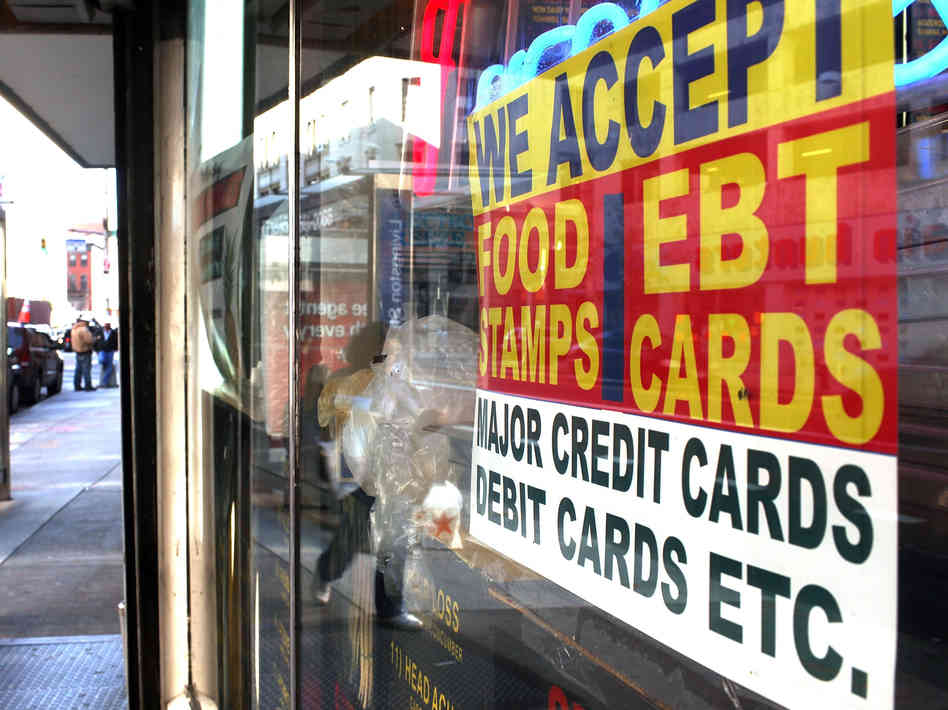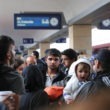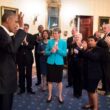(Source: Getty via NPR)
Mostly, the people I met as I reported The American Way of Poverty didn’t fit the stereotypes, nor did they necessarily live in places historically associated with concentrated poverty. Some lived in large suburban houses, but had been beggared by the housing market collapse; others were staggering under huge levels of student debt. Some had had solidly middle-class jobs until the Great Recession slammed into the labor market with the force of a tsunami; others had spent their working lives doing minimum-wage work that never provided enough income to cover their basic bills. And still others had jobs that should have paid their bills, except that they didn’t have good health insurance and when they got sick their savings were rapidly eradicated.
| More than 47 million Americans avoid hunger only because of the existence of the federal food-stamp program. |
Fifty million residents of the richest country on earth live at or below the poverty line; that’s roughly one in every six Americans—and millions more are only a half step ahead of penury. Upwards of 22 percent of children in America live in poverty—a number far higher than that in any other peer nation. More than 47 million Americans avoid hunger only because of the existence of the federal food stamp program. One in four Texans has no health insurance, and nearly one in five Lone Star residents lives in poverty. Six million Americans have absolutely no legitimate access to cash. Life expectancy rates are declining for many high-school dropouts at the bottom of the economic ladder. And real income for working Americans has fallen dramatically over the past four decades.
For those at the bottom of the pyramid—of all races, but, disproportionately, African Americans and Latinos—real income and real opportunity began declining decades before the 2008 financial crash, a decline that accelerated throughout the George W. Bush presidency. The 2008 collapse, however, made a bad situation catastrophic for tens of millions of men, women, and children. And, despite Obama’s securing of health-care reform and a handful of other vital anti-poverty strategies, five years after the financial collapse poverty data in 2013 America is truly hair-raising. Yet in public discourse all-too-often the poor are either ignored or denigrated.
America’s poor do, however, have stories to tell. Among their number are the honors students I met in a school in an eastern suburb of Los Angeles, whose parents had lost their jobs and who were sacrificing their dreams of college so that they could get dead-end work to provide their families with immediate income. The ranks of the poor include the church deacon and metal worker from Stockton, California, who lost his job near the start of the recession and spent months wrestling with his bank as he tried to secure a loan modification so that he and his wife wouldn’t end up homeless. They include the woman I met in Albuquerque whose family went bankrupt in the face of medical bills sent her way after her appendix ruptured. And they include the elderly lady I was introduced to in Texas who worked for Walmart but couldn’t afford more than 88-cent TV dinners each evening.
President Barack Obama could, and should, use his unique podium to launch a national conversation on poverty and inequality; and on what a social compact fit for the needs of the 21st century would look like. Perhaps that would involve a conversation on creating social insurance mechanisms to fund higher education. Maybe it would involve public works programs in areas of high unemployment and expanded microcredit systems in poor communities. Almost certainly, in this age of stark inequality, it would involve a discussion about who pays taxes and how much they pay. It would involve rethinking how the country builds up affordable housing stock and how wages and benefits can be shored up in an era of global competition.
It’s past time for some new, creative thinking both on how to ameliorate poverty for those already trapped in it, and also how best to reduce inequality and to create programs that will stop so many people spiraling into economic insecurity in the future. This is, I believe, one of the great moral imperatives of our time.
Sasha Abramsky is a journalist and a senior fellow at Demos. His newest book is The American Way of Poverty: How the Other Half Still Lives.







0 Comments